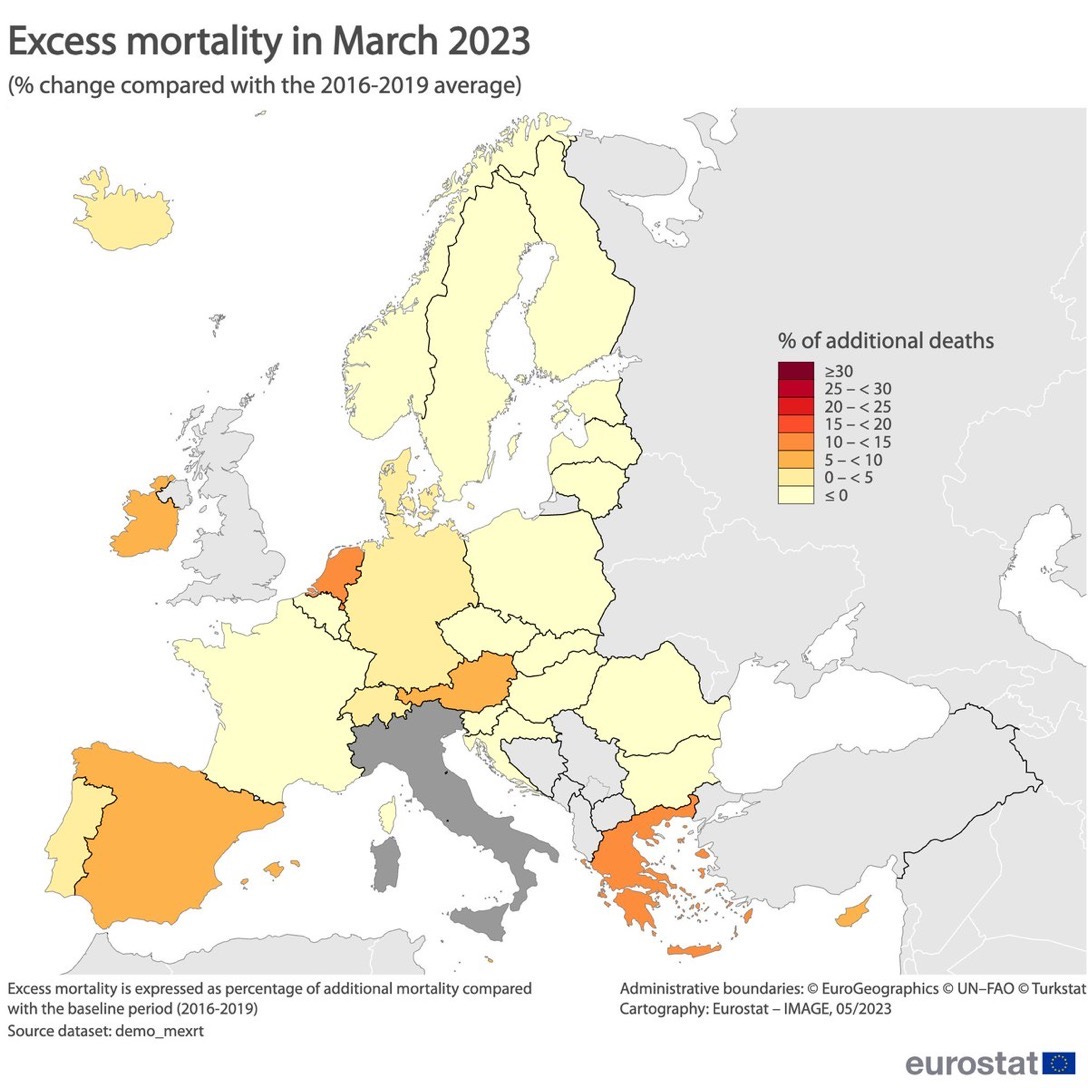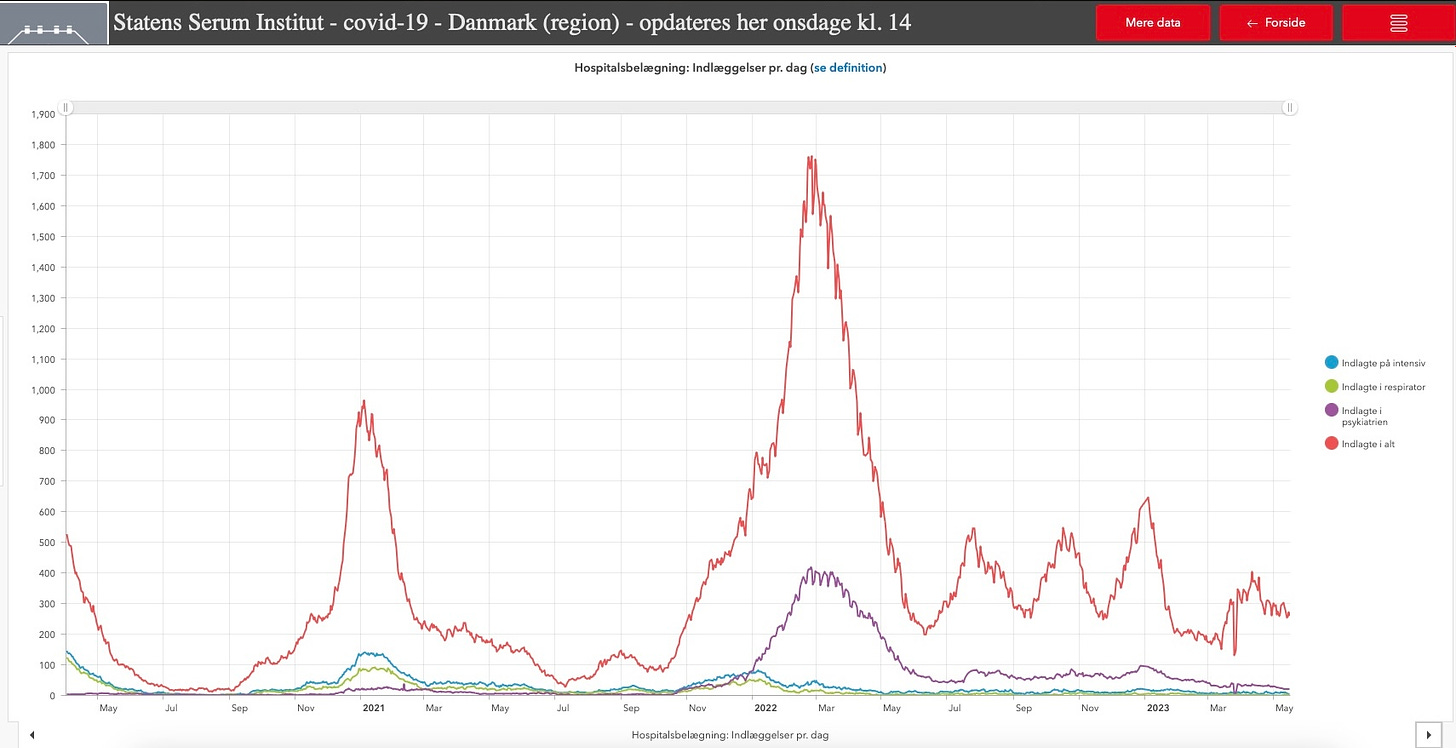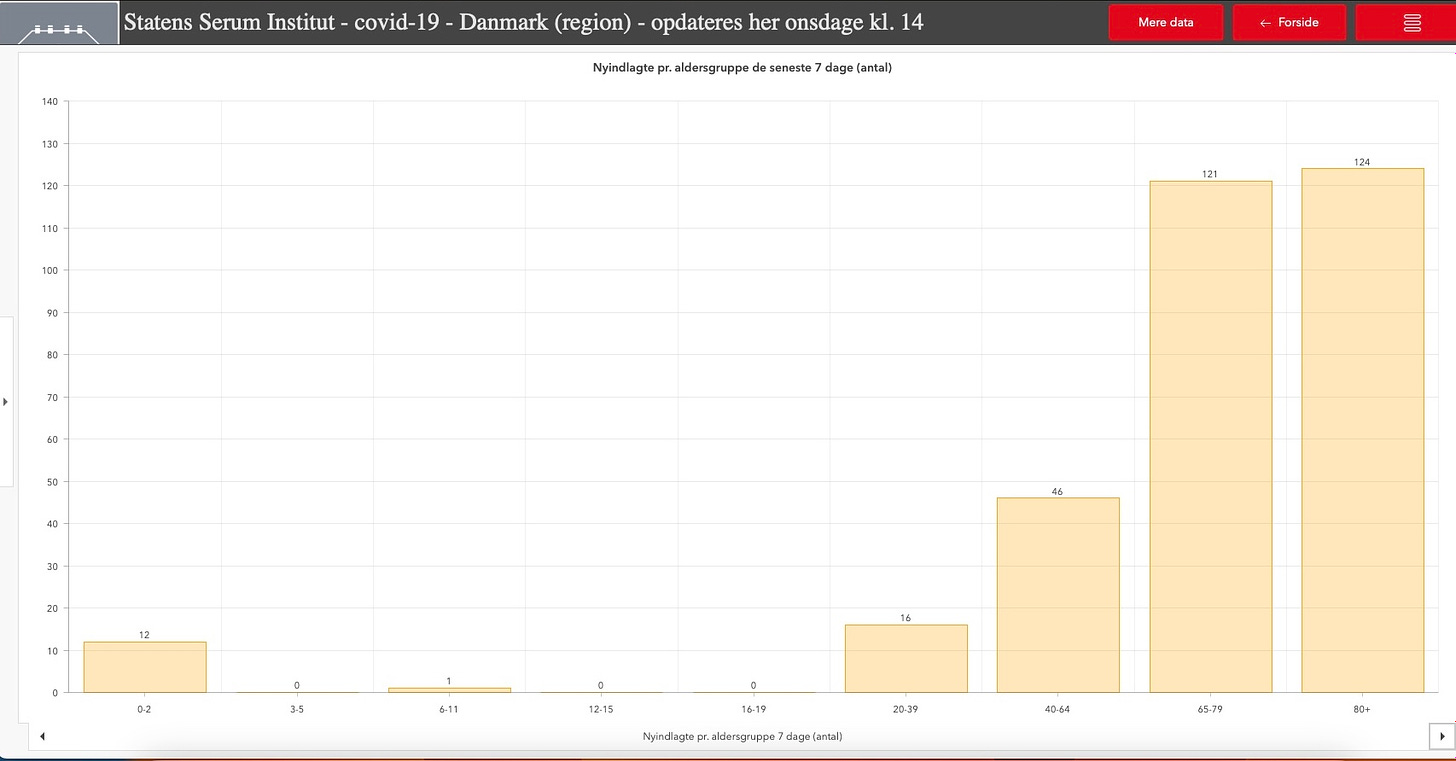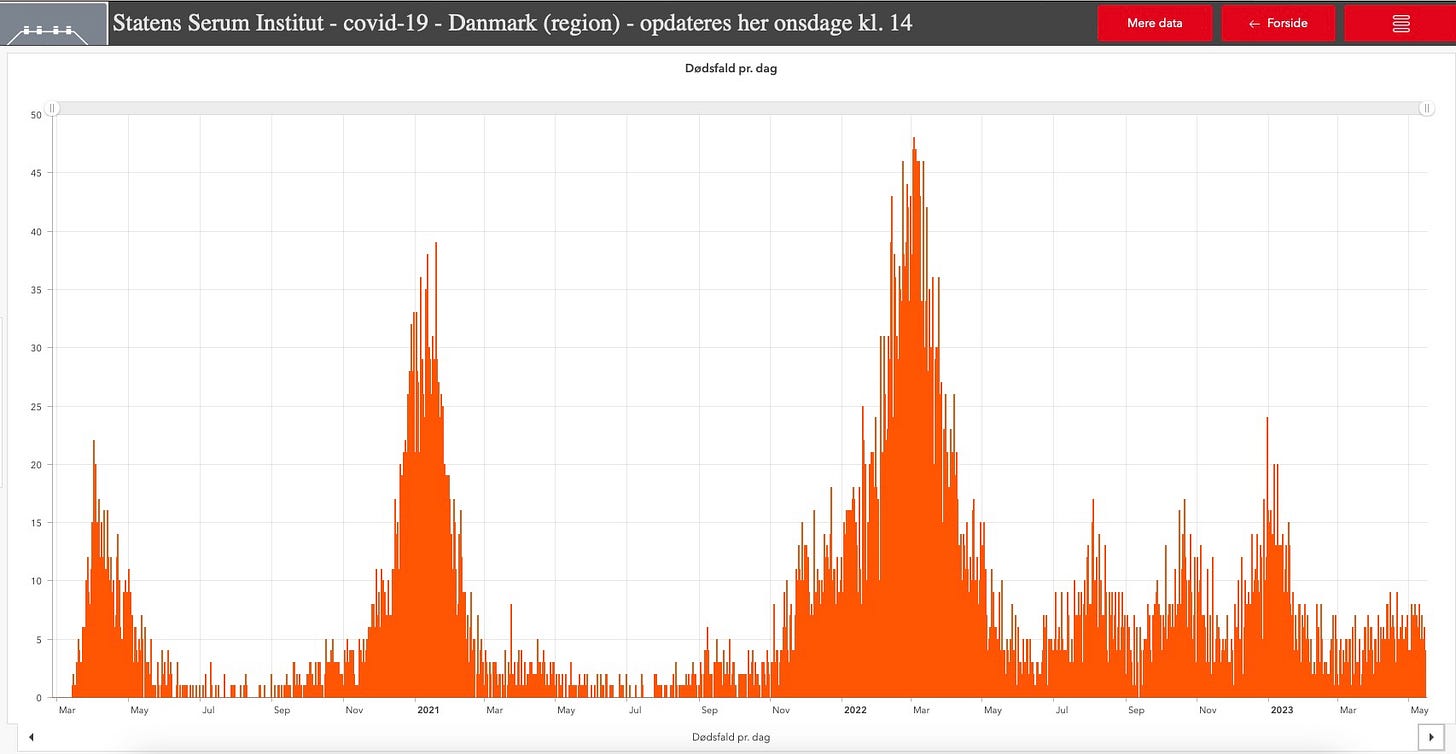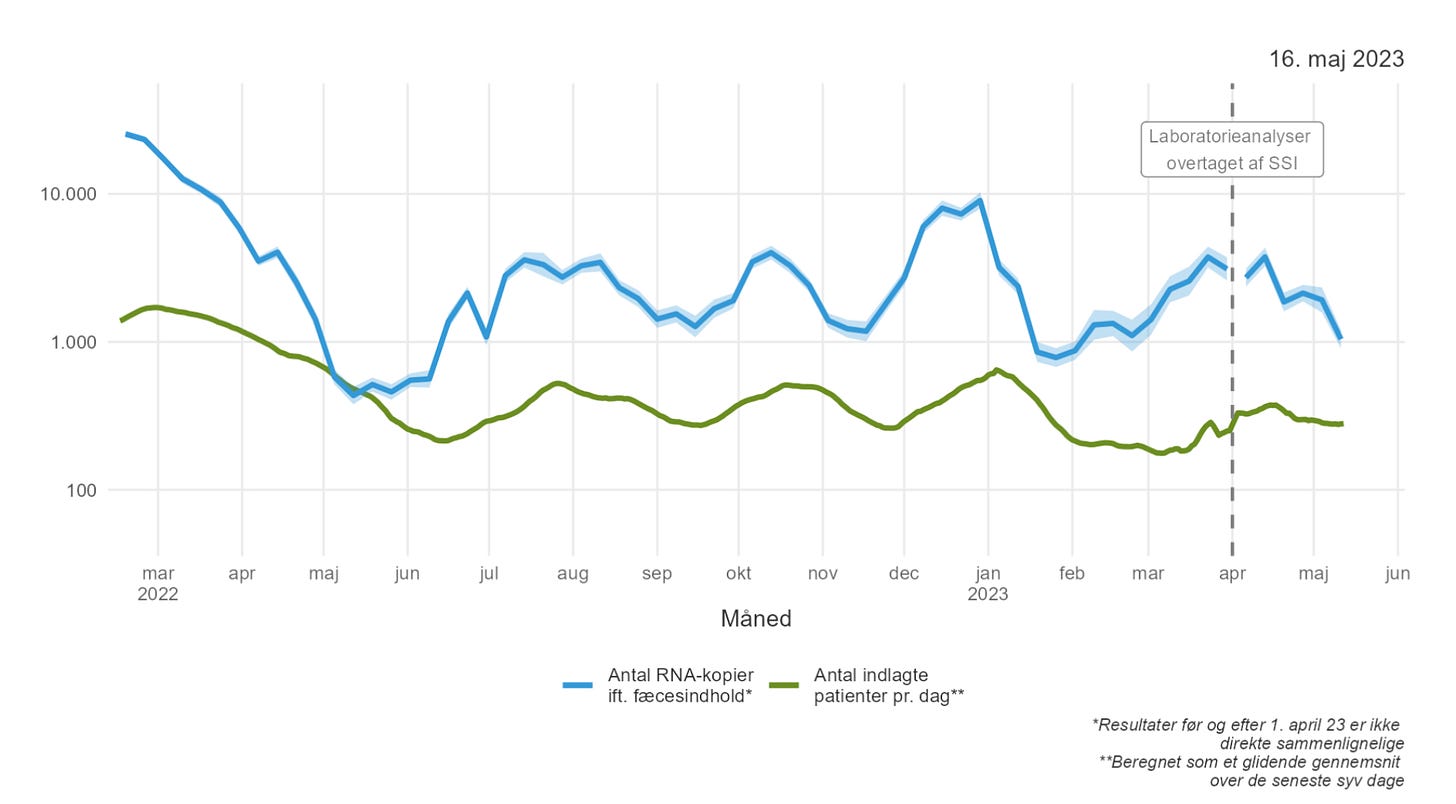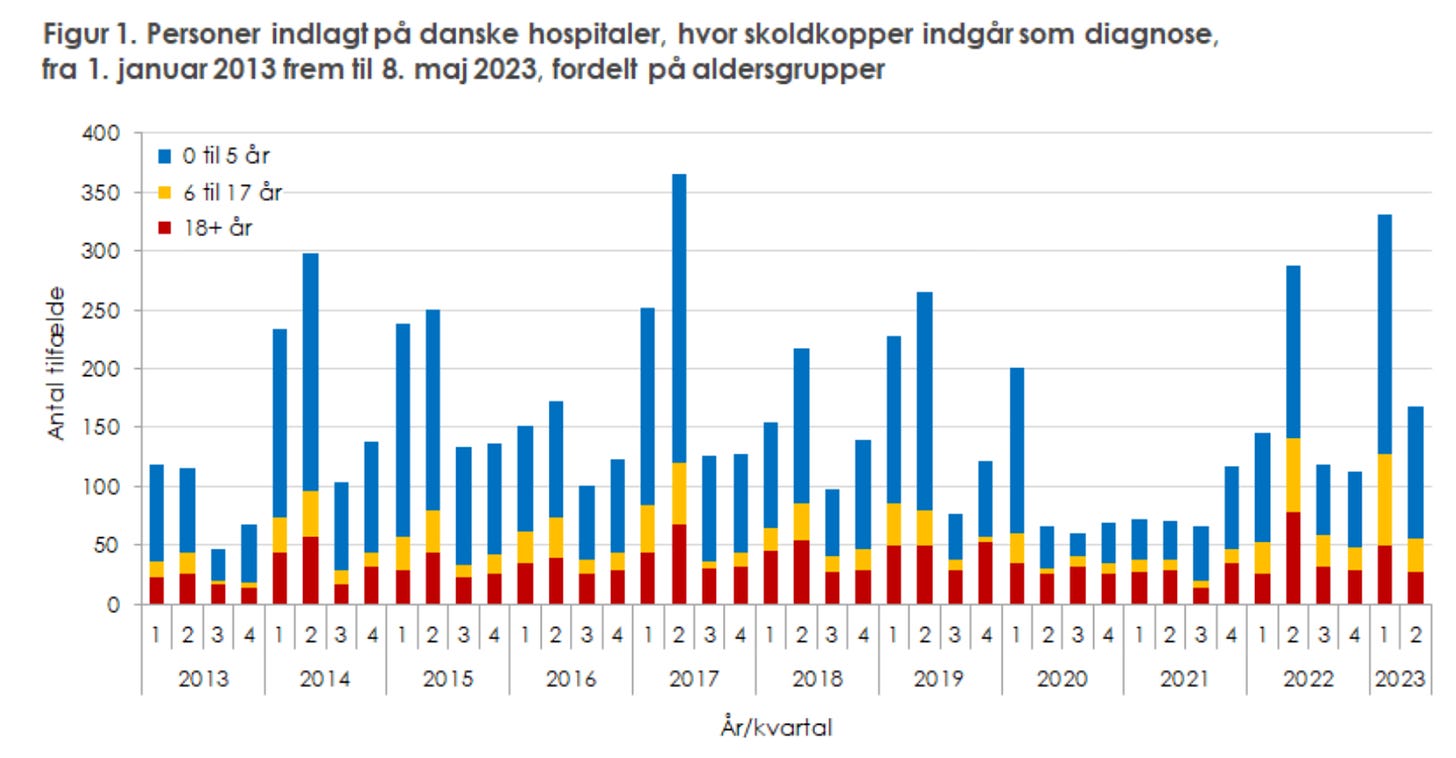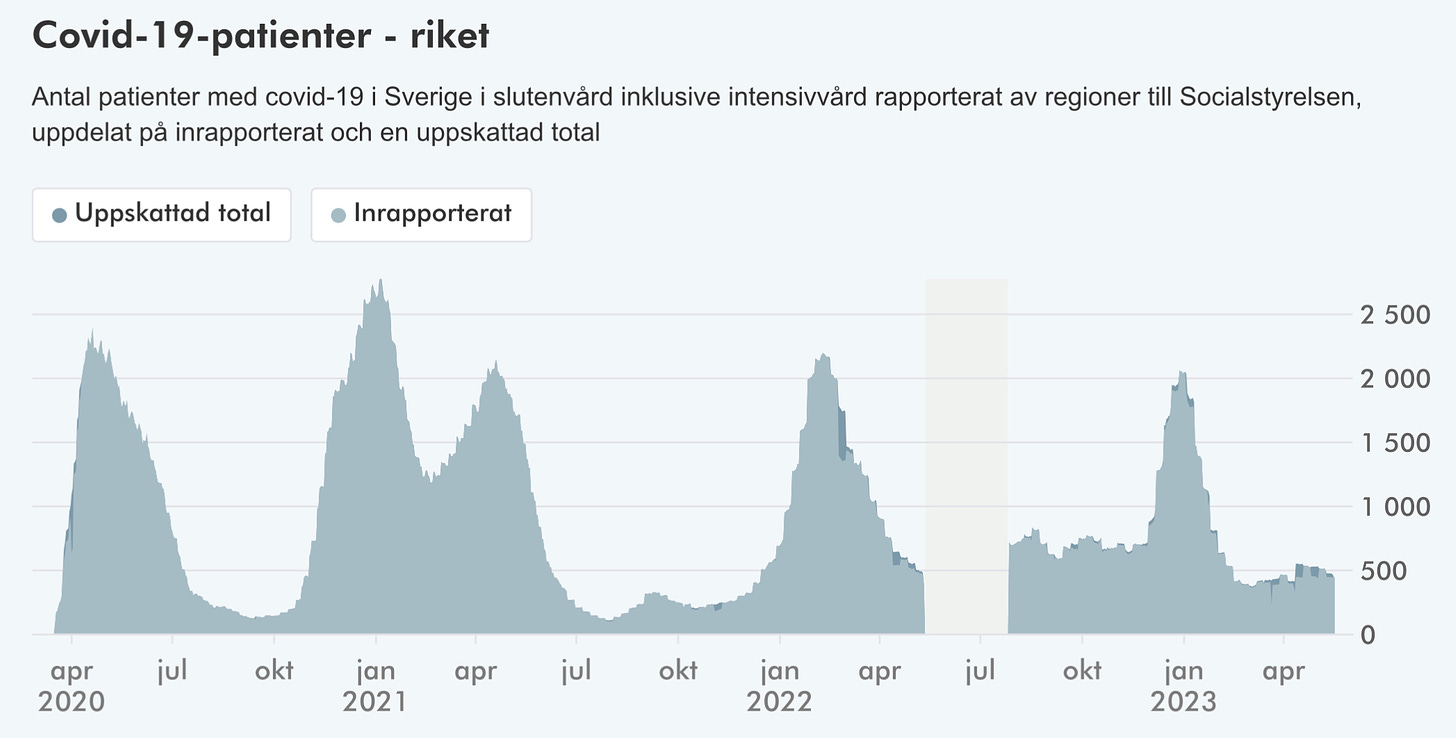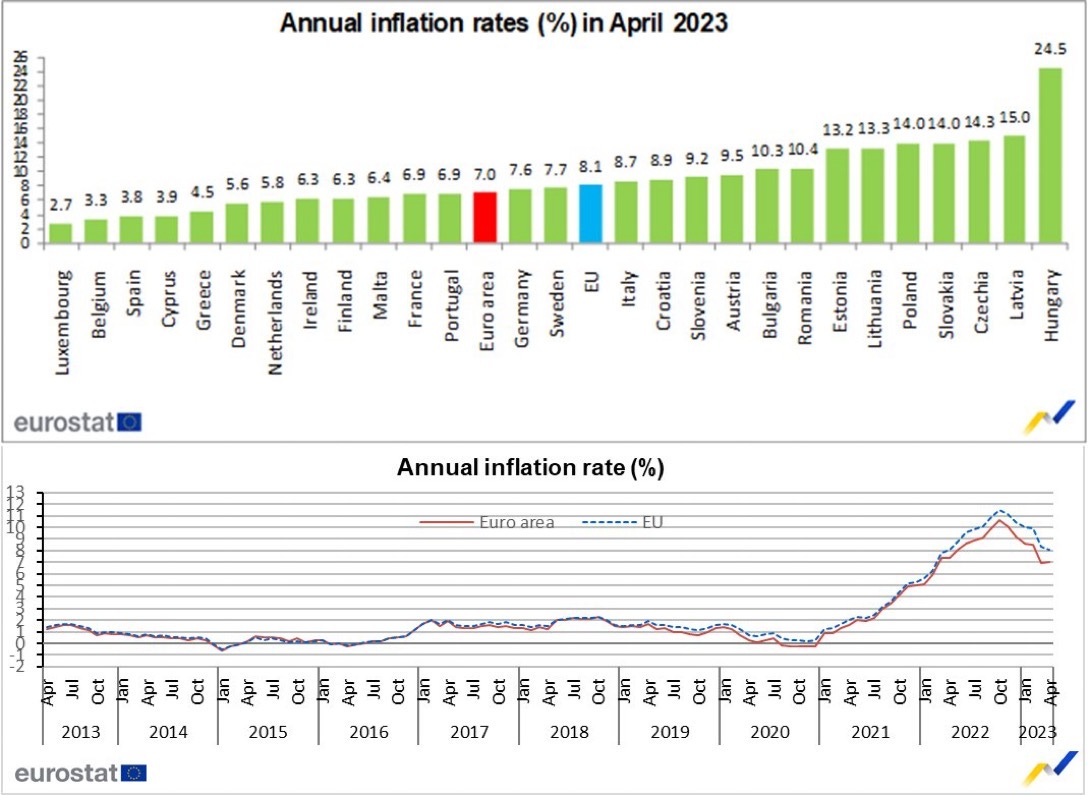🦠Pandemic🦠
🌍 💉 🦠
The World Health Organization says it is time for COVID vaccines to be updated to better protect against the dominant XBB strains of the virus. The WHO Technical Advisory Group on COVID Vaccine Composition says while current vaccines still offer protection against severe infection, hospitalization, and death, vaccine formulas need to better counter an evolving coronavirus.
Current bivalent vaccines target variants that have been swept away by XBB.1.5, XBB.1.16, and XBB.1.9. The global health agency says the recombinant strains are much more infectious and much more adept at evading immune protections.
“Notwithstanding the protection against severe disease, protection against symptomatic disease is limited and less durable. New formulations of COVID vaccines are needed to improve protection against symptomatic disease.”
The WHO says there are still too many knowledge gaps for the new and emerging XBB variants sweeping the globe.
“The potential public health risks of future variants remain unknown.”
The global health agency says vaccine makers have shared confidential data on new vaccine formulas targeting the XBB variants. It says candidate vaccine formulas seem to give much better protection than current bivalent booster doses. With that in mind, the advisory group is recommending vaccine makers no longer target the original coronavirus strain in their formulas because subsequent variants have long since made it extinct.
Intriguingly, the WHO adds there seems to be some evidence now that immune imprinting may be occurring. That is when the immune system reacts to a vaccine by ‘remembering’ how to fight future infections on its own. But it adds that more information is needed and “the clinical impact remains unclear.”
-
A new study estimates that COVID vaccines saved millions of lives and cut global coronavirus deaths in half in the second year of the pandemic.
Researchers used mathematical modeling of virus transmission and excess mortality rates across 185 countries to estimate how many lives would have been lost without groundbreaking vaccines. Interestingly, the study also calculated the cost in lives due to massive global vaccine inequality in the first year of roll out where wealthy countries bought up vaccine supply leaving developing countries out in the cold.
The study estimates that, based on reported COVID deaths, vaccines saved 14.4 million lives in the year since the first vaccinations were administered on December 8, 2020. But that number increases to 19.8 million averted deaths, a 63% reduction, based on excess mortality, a more accurate measure of ‘real’ COVID deaths. The World Health Organization estimates that 40% of all global coronavirus deaths in 2020 alone were unreported.
The study found that if vaccines had been distributed equitably coronavirus deaths in low-income countries would have been reduced by 45%. Those countries relied on the COVAX initiative for their vaccine supply and it failed to reach its target of 20% vaccination coverage in each of the developing countries as wealthy nations cornered the vaccine market. It says even more lives would have been saved if the WHO had reached its target of vaccinating 40% of the population in every country in the world by the end of 2021.
The study concludes:
“Vaccine intellectual property needs to be shared more quickly in the future, with more open technology and knowledge transfer surrounding vaccine production and allocation. Vaccine distribution and delivery infrastructure also need to be scaled up worldwide and misinformation combatted to improve vaccine demand. Improvements must be made in all these areas to reach current vaccine targets and help ensure that vaccines are more equitably distributed in the future.”
The study in full can be found HERE.
🇪🇺🦠
After the EU recorded no excess mortality rates in February for the first time in two years the good news did not carry through to March. According to the European statistical agency EuroStat excess mortality rates in March creep up to +0.3% above the annual pre-pandemic average. To give some context in March of 2022 excess mortality in Europe was almost +7%, which meant about 30,000 more deaths than there would otherwise have been. European excess mortality rates peaked in November of 2020, just before COVID vaccines arrived, at a mind-numbing +40%.
In March, 10 countries across the European Union registered excess mortality rates above the pre-pandemic average. Among them, the Netherlands (+12%) and Greece (+10%) had the highest rate of excess deaths. The others were Ireland and Austria (both +9%), Cyprus(+8%), Spain and Malta (both +6%), Portugal and Germany (both +4%), and Denmark(+1%).
🇩🇰
COVID hospitalizations (230) tumbled in Denmark (-30) while the number of severely infected people in intensive care (6) crept upward (+1) of those, the number on a ventilator (2) declined slightly (-1).
Infection-related admissions to a psychiatric facility (22) also dipped (-1).
Seniors over 65 continue to bear the brunt of severe infections requiring hospitalization as that age group made up 77% of all coronavirus admissions in the last week.
-
The Statens Serum Institute reported 457 new infection cases (wildly underreported) in the last week with 6,162 PCR tests taken.
There were 49 more coronavirus deaths in the last seven days, a number still much too high.
-
COVID wastewater surveillance shows declining rates of virus activity across the country, although the number of monitoring stations has been cut in half.
-
The Statens Serum Institute says there has been an unusually high number of chickenpox cases so far this year. The SSI cautions that there is no requirement to report chickenpox infections so its ability to determine exact numbers is a little handicapped. That said, the institute notes it is seeing an increase in the number of pregnant women who have been exposed to the virus. It adds that pediatricians have also reported dealing with an unusually high number of children infected with chickenpox who have had to be hospitalized.
The SSI has estimated, using the National Patient Register, that there have been approximately 300 chickenpox-related hospitalizations in the first quarter of the year. That is more hospital admissions than at the start of any previous year.
The institute estimates that in a usual year, there are about 60,000 cases of chickenpox, primarily among children. But as Denmark does not offer the chickenpox vaccine among its childhood vaccinations, immunity rates can vary across all age groups. It says the number of chickenpox cases sharply declined in the first two years of the pandemic before returning to quasi-normal last year.
Usually, chickenpox comes with a notorious rash and perhaps a mild fever but in rare cases, it can also cause various complications.
🇸🇪
In Sweden, COVID hospitalizations (442) declined slightly (-6) while the number of severe cases in an ICU (13) edged upward (+3).
-
The Swedish Public Health Agency is raising the alarm over lackluster booster dose uptake among the country’s highest-risk population. The agency says around 48% of elderly seniors over 80 and those in care have had their spring booster dose. It urges vulnerable seniors who have yet to get their latest top-up dose to get vaccinated as soon as possible “to avoid severe infection and death”
Unit Manager Sören Andersson:
“In order to maintain good protection against severe COVID infection, it is important that the regions and the heads of elderly care ensure that this group gets access to vaccination as soon as possible so that the planning for the vaccinations later this autumn is not negatively affected.”
Sweden’s national health agency recommends seniors over 80 and those in care homes get a booster dose every spring and winter. It says there should be at least six months between inoculations.
As for the coronavirus, the agency says infection spread is still ongoing and it expects the virus to continue to circulate to some level around the country through the summer.
-
After being hit with three pandemics all at the same time the Swedish Public Health Agency says the worst is now over. The agency says while COVID infections continue numbers are much lower than they were in December and January. It adds that after an intense winter, the influenza and RS virus epidemics are both now over.
The National health agency says the COVID, influenza, and RS virus waves all peaked in December and then continued to varying degrees into January putting Sweden’s healthcare system under intense pressure.
Agency Epidemiologist AnnaSara Carnahan:
“The spread of both influenza A and B is now judged to be down to a low level and the epidemic is over for this season. During December, we had a difficult situation, when influenza, RS virus, and COVID all reached peaks at the same time. During every period of increased infection spread, there are people who become seriously ill, but this winter was the first time we saw a simultaneous peak with all three viruses.”
The public health agency says it saw more RS virus hospitalizations this past winter than any year prior to the COVID pandemic. Just over 30% of all RS virus-related hospitalizations were infants under the age of one. It says that after two years of the coronavirus pandemic and virtually no exposure to RS virus there were a lot of children who were much more susceptible to infection this past winter.
🇫🇮
Finland bas register 1,284 new COVID infections and added 97 more pandemic deaths in the last week.
-
The Finnish Institute for Health says a fall COVID booster dose campaign is very likely. The institute is working on gathering as much information as it can to inform how the fall booster dose campaign will work, what vaccines will be used, and who will qualify to get them. In a preliminary recommendation, the agency thinks it will likely be high-risk populations like seniors, those with underlying health concerns, and pregnant women, who will be able to get boosted. It will also design the booster dose campaign to include influenza vaccinations.
It expects to be able to release a lot more details sometime next month.
Chief Physician Hanna Nohynek:
"It is important that those working in the field can plan and prepare for the vaccination effort well in advance. However, we are following new research data on vaccines and their estimated effectiveness in different population groups, so that we can refine the preliminary assessment and our upcoming recommendation.”
The institute does say that it likely will not be using the current bivalent vaccines targeting the BA.1, BA.4, and BA.5 variants for the fall booster dose campaign. Instead, it says new “future variant-tailored vaccines” will most likely be used.
“The protective effect of the current BA.1 and BA.4-5 vaccines against infections caused by the variants circulating today and the additional effect against hospitalization and death in the most vulnerable groups seems to be low.”
The institute says it has submitted a new study on the efficacy of the current batch of variant-specific vaccines and that study is now being peer-reviewed.
🇳🇴
The Norwegian Institute of Public Health publishes a bi-weekly pandemic update. The next report is due next week.
🇨🇦
The Public Health Agency of Canada recorded another 3,724 new infections (underreported) and another 55 coronavirus deaths in the last week. Total to date pandemic deaths have reached 52,301 lives lost.
The seven-day positivity percentage is 9.8%, a slight decrease from the week prior.
-
PHAC has not updated COVID hospitalizations due to some kind of technical glitch.
⚡️Energy & Environment 🍃
🇪🇺
Mixed news on the European inflation front as Euro Zone inflation crept upward for the 2nd month in a row from 6.9% to 7%. But inflation within the European Union eased to 8.1% in April, down from 8.3% the month before.
Among the Nordics, Denmark (5.6%) registered the lowest inflation rate while Sweden (7.7%) had the highest. Hungary (24.5%) continues to sport by far the highest inflation in Europe. According to the European statistics agency, EuroStat, inflation fell in 22 European countries last month and increased in five.
“In April, the highest contribution to the annual euro area inflation rate came from food, alcohol & tobacco (+2.75 percentage points, pp), followed by services (+2.21 pp), non-energy industrial goods (+1.62 pp) and energy (+0.38 pp).”
🇩🇰
The Danish government wants the state to become co-owners in all future offshore wind farms. This is according to Denmark’s Climate Minister Lars Aagaard who spoke to the Danish newspaper Børsen.
“Our starting point is to start with a model with state co-ownership in combination with a concession payment. State co-ownership, with which we have good experience from, for example, the North Sea, helps to ensure that the state gets more insight into important infrastructure and at the same time society is ensured a share of the gain by utilizing Danish sea area, which is a common resource.”
The idea already has a precedent as the model requiring the Danish government to be a part owner already applies to North Sea oil extraction projects. But the energy sector’s trade association, Green Power Denmark, is not a fan of this latest development.
The Association’s Renewable Energy Director Thomas Aarestrup Jepsen spoke to Ritzau:
“We believe that you are introducing unnecessary complexity into the tenders and uncertainty?”
Denmark’s Climate Minister does not say exactly how much state co-ownership the Danish government wants. New offers for offshore wind farms are currently being negotiated.
🇫🇮
How times have changed. Once sky-high electricity prices in Finland are now so cheap the country has scaled back output from its newest nuclear power plant. For a moment on Wednesday, the market price for electricity in Finland dropped below zero cents per kilowatt hour before bouncing back to 0.3 cents.
Usually, hydroelectric production would be regulated to increase or decrease power production as needed but flood conditions in the northern part of the country are making it challenging to reduce hydroelectric production.
Finland has also brought new wind farms online that generate around 500-megawatt hours of electricity, which could further add to the pressure driving electricity prices into the negative.
-
While inflation remains high, Statistics Finland is indicating that food prices in the country may finally be starting to fall. While prices remain high the agency notes that average prices declined month to month. This is only the second time since Russia’s invasion of Ukraine triggered global uncertainty that food prices in Finland have dropped from one month to the next. It says from April to March there was a tiny 1.22% drop in food prices, which is also the largest decrease since 2019.
That said, it notes year over year that the price of sugar is almost 43% more expensive, flour is up 32%, and even the cost of pizza rose by 29.5%. Coffee on the hand was down more than 9% and the price of some vegetables also fell.
🇸🇪
Sweden also recorded decreasing food prices. Statistics Sweden says this is the first time since November of 2021 that food prices have declined. Food prices in Sweden have skyrocketed straining household budgets and prompting the government to meet with grocery store owners to try and find solutions.
-
The Swedish government is dismissing concerns raised by environmental groups and approving two new offshore wind farms off the country’s west coast. The 100 wind turbines in all are estimated to be able to produce roughly the same amount of electricity as a nuclear reactor.
🇺🇦/ 🇷🇺 War
🇷🇺 🇨🇳 🇸🇬 🇹🇷 🇦🇪/ 🇪🇺
Since the European Union and other Western nations imposed sanctions and price caps on Russian oil and gas, Russia has found ways to do an end run around those restrictions. The Centre for Research on Energy and Clean Air has found that the flow of Russian oil and gas has substantially increased to China, India, Turkey, Singapore, and the United Arab Emirates.
“In the year following the start of the invasion, seaborne imports of Russian crude oil into China, India, Turkey, United Arab Emirates, and Singapore increased by 140% in volume terms, compared with the 12-month period before the invasion. The total value of their imports was €74.8 billion over the twelve months, and since the EU crude oil ban until one year after the start of the war, these five countries have made up 70% of Russia’s crude oil exports.”
In a scheme the CREA has dubbed as ‘the laundromat’ those countries in turn sell Russian oil and gas back to the European and Western countries imposing sanctions. The CREA found that countries sanctioning Russian oil and gas increased imports of refined oil products from the five ‘laundromat’ countries by 10 million tonnes (+26%) since Russia invaded Ukraine. That equals €42 billion in imported oil products, money that in part, flows back to Russia and its war effort.
“Laundromat countries' exports of oil products increased 80% in value terms and 26% in volume terms to price cap coalition countries, but only rose 2% (or +2.9 million tonnes) to non-price cap countries in the year since the invasion on prior year levels.”
The largest importer of oil products, €17 billion worth, from the five ‘laundromat’ countries, was the European Union.
🇩🇪🇫🇷🇬🇧🇮🇹🇺🇦
Ukraine’s President returned from his whirlwind European tour with billion of dollars in new weapons donations and the promise of more to come. Volodymyr Zelenskyy visited Italy, Germany, the United Kingdom, and France. After Germany unveiled its largest weapons donation to date including a swath of newer leopard tanks, the UK donated hundreds of air defense missiles, and long-range attack drones. But Zelenskyy also made progress towards seriously upgrading Ukraine’s Air Force.
Britain’s Prime Minister Rishi Sunak pledged to work towards building a coalition of countries to donate F-16s to Ukraine. In France, President Emmanuel Macron hinted that France could host Ukrainian fighter pilots to get them trained on more modern fighter jets.
“I haven't talked about planes, I've talked about missiles, I've talked about training. There are no taboos.”
🇩🇰🇺🇦
Ukrainian President Volodymyr Zelenskyy also took time for a virtual address to attendees at a democracy summit in Copenhagen. Zelenskyy took time to thank Denmark and other countries for their iron-clad support for Ukraine and its fight against Russia.
“When democracies react swiftly to threats, despots don't stand a chance.”
🇪🇺🇨🇦🇺🇸🇩🇰+
43 countries have agreed to create a register to track all the destruction Russia has caused in Ukraine. Signatories on the register agreement include Canada, the United States, and Denmark. The agreement was reached this week at the Council of Europe meetings in Iceland. The council consists of 46 member nations.
The register is hailed as a concrete step in holding Russia to account and for it to ultimately pay the bill to rebuild all it has destroyed in Ukraine.
European Commission President Ursula von der Leyen says even though the war continues to rage on it is important to prepare for the trials and rebuilding that will take place after the fighting ends.
“Russia is committing a crime of aggression by waging war in Ukraine. That is why I am happy that we are getting a register. It is a prerequisite for justice. And justice for the victims is a prerequisite for peace?”
Ukrainian authorities and citizens should be able to register and document war damages for which Russia is liable. However, finite details on how exactly that will be done have yet to be clarified.
🇩🇰🇸🇪🇳🇴🇫🇮/ 🇷🇺
The Nordic investigative journalism documentary ‘Shadow War’ continues to pull back the curtain on Russia’s efforts to wield misinformation as a weapon of war. The collaboration between the public broadcasters from Denmark, Sweden, Norway, and Finland has mapped a network of people across Europe “systematically spreading disinformation about the war in Ukraine.”
Journalists from DR, NRK, SVT, and Yle painstakingly identified people involved in a misinformation network spanning Europe, including 152 people within the Nordic countries. The network would on a large scale pump out misinformation either originating directly from Russia or was actively reinforced through “Russian actors, troll factories, and state media.”
At the Council of Europe meeting in Iceland, Danish Prime Minister Mette Frederiksen spoke to DR:
“It is one of the methods we have seen Russia use to make European societies less stable. Either by spreading fake news in public debate or in some other way trying to divide Danes and Europeans. It is also something that is included in the latest threat assessment, and it is part of modern warfare, you could say.”
Frederiksen says the intelligence services and other authorities have a role to play but people also need to be vigilant. She says people need to be critical thinkers, check sources of information, and not believe every single thing they hear, read, or see.
🇸🇪 🇺🇦
Citing sources, Sweden’s public broadcaster SVT is reporting that a full Ukrainian brigade of troops, between 3,000 to 5,000 soldiers, underwent special training in Sweden. The Swedish military has yet to publicly reveal any such training took place. SVT says the Ukrainians trained on some major weapons including the Swedish Archer artillery systems, Swedish modified versions of Leopard tanks, and other heavy weapons.
While we know that Swedish military instructors have helped train Ukrainian troops in an international effort in the United Kingdom, this is the first news of any training taking place in Sweden.
SVT says the troops finished their training and returned to the fight in Ukraine earlier this month.
🇫🇮/ 🇷🇺
Russia has frozen the bank accounts of Finland’s embassy in Moscow and consulate offices in St. Petersburg. The Finnish Foreign Affairs Ministry confirmed the news to the Finnish newspaper Helsingin Sanomat.
“The situation is serious and the matter is being investigated.”
At a press conference this week, Finland’s Foreign Affairs Minister Pekka Haavisto said they have reached out to Russian authorities but to no avail.
“We sent a note to Russia at the beginning of May. Russia has not yet offered an official explanation. We will continue to try to discuss the matter with Russian authorities to reach a solution. However, this does not mean we have to close the embassy or consulate. We are now trying to find other methods to take care of all payments.”
Finnish news agency STT is also reporting that “representations of other EU countries have also had problems handling payment traffic.”
🇳🇴 🇺🇦
The Norwegian Institute of Public Health has done a survey to gauge the healthcare needs of the more than 35,000 Ukrainian refugees that have arrived in the country. The institute found lots of room for improvement.
Senior Adviser Dr. Angela S. Labberton:
“A total of 731 people took part in the survey, 83% of them were women and almost 70% had higher education. More than half had responsibility for at least one child under the age of 18.”
The NIPH says communication is a challenge. Just two out of every five respondents said they had received information about available health services in Norway in a way that they could understand.
“Among the new arrivals, it was reported to a lesser extent that they had received comprehensible information about health services, that they knew how to contact the health care system, and that they had received the health care they felt they had needed in Norway. This indicates an area for improvement.”
The institute also found the state of the Ukrainian’s overall health to be lacking, especially when it came to their teeth.
“About half of the refugees rated their health as good or very good and just under a third rated their dental health as good or very good. A higher proportion of the refugees also reported long-term illnesses or health problems, and more symptoms of psychological distress.”
The NIPH hopes the survey is a first step in accruing information to help in the planning, and delivery, of healthcare services for the Ukrainian refugees.
🇹🇷
Incumbent Turkish President Recep Tayyip Erdogan beat expectations in last weekend’s national elections but will still have to face a run-off vote next month. Erdogan came just short of crossing the required 50% threshold to secure reelection with 49.51% of the vote. Opposition leader Kemal Kilicdaroglu garnered 44.8%.
Sweden and other NATO member countries have been watching the election closely with the hope that the outcome would help ease Turkey’s opposition to Sweden’s NATO membership.




